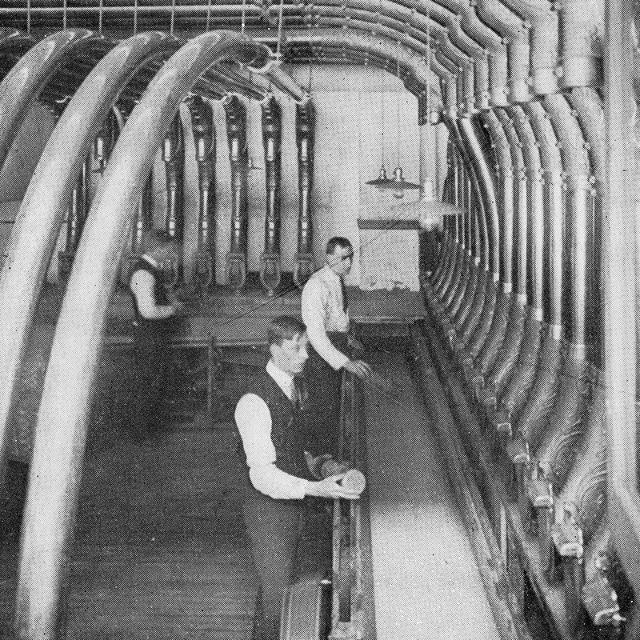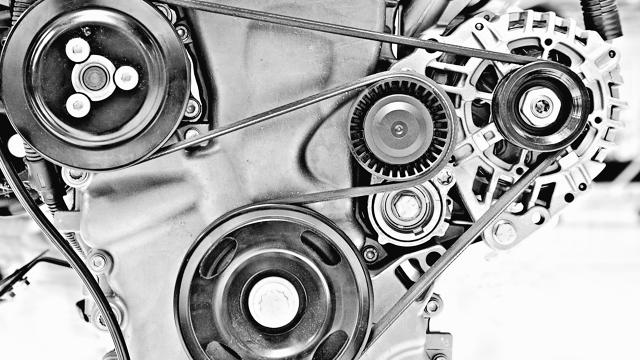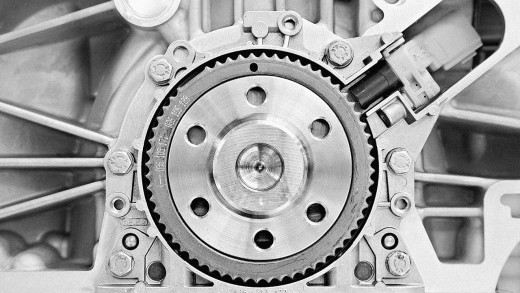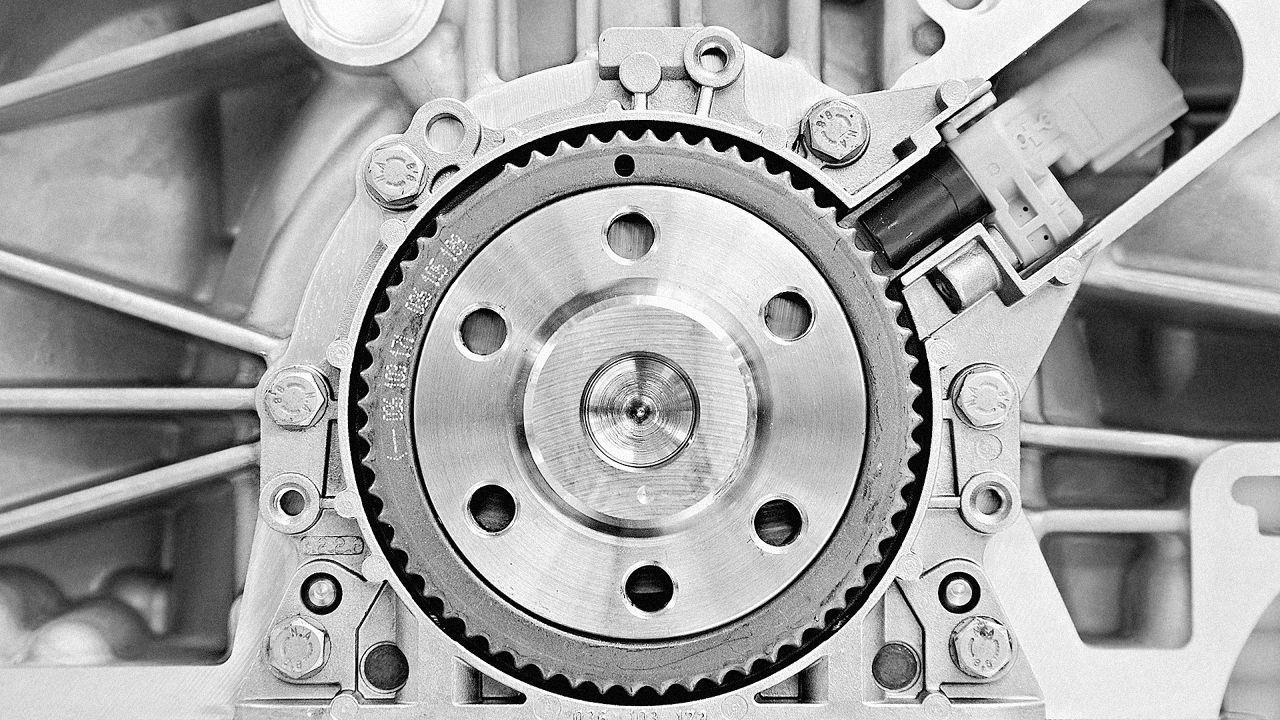Why we love Objects With moving elements
We may just envision the longer term as graceful and easy, however we should not omit the value of cogs, switches, and buttons.
June 23, 2015
when we bring to mind futuristic person interfaces, we frequently envision expansive, shiny, multi-touch surfaces. whether we understand it or not, one of the crucial influential architects of those preconceptions is the television sequence superstar Trek: the next generation. whereas designing what became known as LCARS, or Library pc get admission to/Retrieval gadget, scenic artwork supervisor and technical consultant Michael Okuda used to be asked to give you visuals that regarded more developed than what the unique star Trek franchise depicted, but on a slightly paltry tv funds. fairly than establishing tricky bodily consoles, Okuda selected to make use of inexpensive backlit sheets of Plexiglas which, over time, was an increasing number of animated with the intention to make stronger the illusion of interactivity.
Our perceptions round each brand new and futuristic device interactions are dramatically influenced through tv and movies, but television and films are not necessarily influenced through sensible or moderately researched user experiences. somewhat, networks and studios are far more occupied with issues like price range, the need to fast and successfully keep up a correspondence futuristic settings to the target audience, and the desire to existing novel, attractive, and CGI-suitable visuals. In different phrases, fictional know-how doesn’t in reality have to be effective; it just has to avoid the appearance of being utterly ineffective.

As we have now viewed from displays like the next generation, one of the most absolute best ways to location expertise sooner or later—and, at the related time, create inexpensive results—is to eschew as many transferring parts as possible. however we wish to watch out not to confuse actors carrying around slabs of Lucite that may be brought to life in submit-production with the types of units, interactions, and futures we actually need for ourselves.

The attract of lead to and effect
any individual who has spent any time at all around tots knows that most have an inherent fascination with buttons, switches, and knobs, and namely with the cause-and-impact relationships they regularly encapsulate. As we get older, we find ourselves captivated with the aid of grown-up variations of these toys: things like pneumatic tubes (almost definitely the closest factor there may be to a bodily manifestation of the web), Rube Goldberg machines, and the insides of automatic watches glimpsed through clear, synthetic sapphire case-backs.
There are even mechanisms recognized to industrial designers as “placebo buttons” sprinkled surreptitiously all through our environments, non-functioning push-buttons in places like elevators, trains, and crosswalks designed to placate us through giving us the appearance of control in situations that have lengthy for the reason that been solely automatic. If we pay close consideration to some of these clues, and the way they signify the ways through which we’re not simplest compelled to have interaction with our environments, but certainly anatomically optimized to manipulate our environment, we are able to see that, regardless of what science fiction prophecies, there’s nonetheless an excessive amount of value and satisfaction to be found in bodily, tactile experiences.

Pushing Buttons
Technological progress has long been associated with the miniaturization, discount, and the elimination of transferring parts. believe the evolution of devices like grandfather clocks and mechanical watches to quartz modules, and now to the microprocessors and touchscreens of sensible watches; rotary telephones, to touch-tone dial pads, to the capacitive multi-touch displays on our smartphones; mechanical typewriters, to laptop keyboards, to digital keyboards; the electromechanical split-flap displays of old alarm clocks and departure boards in educate stations and airports, to LEDs, LCDs, and digital paper. The listing goes on and on.
one of the crucial fascinating examples of the place shifting parts have managed to persist in the face of brand new know-how is the iPhone. I used to be initially shocked to see iPhones keep their physical “house” buttons throughout their evolution, seeing that no longer handiest does it increases the general size of the telephone by means of at least a centimeter, however the mechanism additionally went via a duration of being notoriously unreliable. Why, then, would a company reputedly so obsessed with simplification and easy design—one of the vital first companies to replace mechanical drives with flash storage, cords with Bluetooth, scroll wheels with multi-touch, physical latches with magnets, optical drives with gigabit Ethernet, and most just lately, trackpads with an integrated button with static pressure touch trackpads—now not handiest proceed to tolerate all the negative aspects and complexities of this sort of crucial and incessantly used transferring section, however even build additional performance into it, akin to a fingerprint sensor?
the easy answer is that bodily mechanisms can be operated without having a look (image increasing the quantity of a favorite monitor without having to interrupt your exercise, or attaining down and pushing aside an incoming name while not having to break eye contact with a consumer). but there may be every other much less tangible yet extra fascinating rationalization: the iPhone’s physical residence button makes users really feel steady, and that safety is more essential than simplifying the design and manufacturing course of. regardless of how lost you may find your self within the hierarchical convolutions of an utility’s menus, urgent the house button at all times takes you back to a protected and acquainted region. of course, a “smooth” (or virtual) button akin to those now we have turn into accustomed to on many Android gadgets would serve the same goal, so why go to all the bother to make it not simplest physically depress, but in addition produce an awfully explicit type of crisp, tactile actuation?
as a result of “clicking” requires bodily force, and due to the fact that physical force offers tactile feedback, it can be a lot better for each speaking intent, and for fighting accidental activations. moreover, mechanical shifting parts by some means feel “lower level” and extra powerful than their virtualized counterparts—much less more likely to “freeze” or ignore consumer input when the instrument they’re connected to is appearing glitchy. It takes us again to that very same cause-and-effect relationship most of us practiced over and over again as toddlers with job boards, and with each other tactile mechanism we could get our little fingers on.

the way forward for transferring components
probably the most mistakes in assuming that the evolution of expertise will all the time lead to the removal of shifting parts is the idea that shifting elements themselves are one way or the other proof against that very same evolutionary course of. that is nearly not at all the case. reasonably than considering of transferring components as generally out of date mechanisms to be evaded at all costs, there is an opportunity for us to fundamentally reimagine the character of how elements and supplies engage with one any other.
Nanomechanics may sooner or later be used to gather macroscopic methods that no longer most effective move and adapt in totally novel ways, however are also able to repairing themselves in actual time. Advances in materials science and quantum chemistry may result in mechanisms which might be a number of orders of magnitude extra proof against put on than what we at present have, dramatically decreasing—and even solely getting rid of—the upkeep requirements and unpredictability that we steadily associate with some of nowadays’s shifting elements. And finally, technologies like magnetic levitation might result in the flexibility to switch energy between mechanical components, or swap on and off an electric circuit, without any physical contact in any respect (think about totally frictionless magnetic gears suspended in permanent alignment, and buttons that flow in their sockets on magnetic cushions). the long run will be assembled out of entirely mechanical elements with almost no subject material fatigue to restrict their lifespans.
One option to clear up the problems associated with transferring elements is, after all, to easily get rid of these shifting components altogether. And in industrial contexts, the place designing and engineering options that require fewer shifting parts can retailer space, scale back prices, and increase sturdiness, technologies like bladeless wind generators can make plenty of experience. however in terms of extra non-public technology—gadgets that we continuously touch, cling, or put on—figuring out how you can mitigate the challenges of transferring components is a much more fascinating means, one who recognizes the worth of the tactile expertise.
[top picture: Nataliya Hora by means of Shutterstock]
(132)





